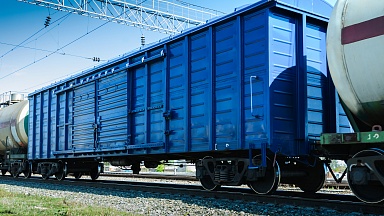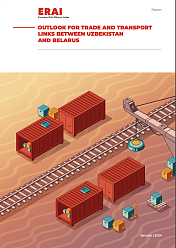The concept of the Middle Corridor is that with minimal Chinese input, the other economies involved can establish a coordinated rail corridor, which can facilitate intercontinental China-Europe trans-regional trade, but also develop intra-regional and extra-regional trade. Most of the potential depends on developing extra-regional trade. For example, if Kazakhstan can increase trade with the European Union, then both the intra-regional and trans-regional trade can piggy-back on that development. The Middle Corridor is also multimodal, having to cross seas twice, once in the Caspian and once again on either the Bosporus or Black Sea. China’s rail freight policy in Central Asia has not been an infrastructure project but a logistics development project.
Most development of the international rail freight systems is coordinated by state-owned rail networks, and much of the logistics traffic is through state-owned subsidiaries of these state rail corporations. This state-to-state development of the Middle Corridor governance institution should mean a smoother operational environment for private freight forwarders.
Central Asia, the Caucasus, Turkey, and Eastern Europe have great industrial infrastructure potential for the development of a rail corridor. But domestic industrialization drives are malformed, stalled, or non-existent. Meanwhile, China’s domestic industrial policy is sophisticated and its geo-industrial policy is in an advanced state of deployment. Without domestic trade and industrial policy development from the Middle Corridor states, docking the system to China on one side and the European Union on the other will be difficult.
The three institutional groupings of the European Union, Middle Corridor economies, and China have differing policy objectives and competencies in developing a viable Eurasian rail network. China is invested and infrastructurally developed, but lacks regional competence; the Middle Corridor economies are invested but are structurally and institutionally underdeveloped; while the European Union is regionally competent but uninvested in the project.
Increased rail transport infrastructure and trade volume should benefit the Middle Corridor economies themselves. However, the Middle Corridor remains a reactionary policy to China’s subsidized incentives to domestic freight forwarders to use the CR Express intercontinental rail system. Without the China policy, the Middle Corridor development policy incentives disappear. Without China’s geoeconomic policy push, there is therefore still little economic rationale behind the development of Middle Corridor.




